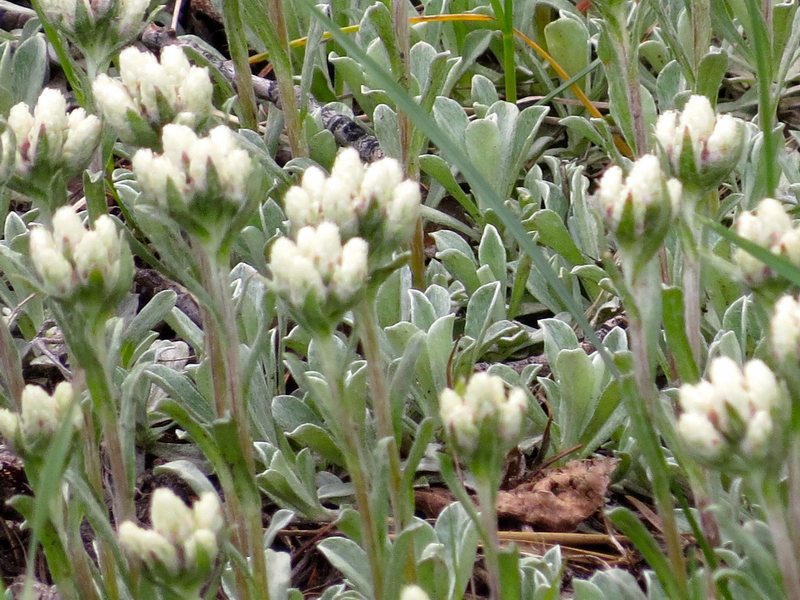Pussy Toes
Antennaria plantaginifolia
Click here to download a PDF of this plant information page (for printing).

Sun Exposure: Sun, Part Sun
Season of Interest: All season
Bloom Time: April - May
Bloom Color: White
Height: 4 to 6 in.
Spread: 12 to 18 in.
Spacing: 16 in.
Water Needs: Below average
Maintenance: Very low
Soil Type: Clay, Sandy, Rocky, Dry
Soil pH: Acidic, Neutral
Soil Drainage: Well drained
Pests: None, Rabbit and Deer resistant
Diseases: None
Wildlife: Bees, Butterflies, Birds

Description:
Pussy Toes, also known as Mouse Ears, Puppytoes, or Ladies' Tobacco, is an evergreen perennial that adds charm to any type of garden. It is native to the eastern part of the United States. It is typically found growing in open woodlands, rocky or dry slopes, meadows, and prairies. In addition, it strongly attracts American painted lady butterflies, which makes any landscape more lively.
Mouse Ear is a mat-forming plant growing about 6″ inches tall, with grayish and woolly flower stalks and leaves. The plant forms rosettes of basal leaves and erect stems supporting the fuzzy flowerheads that appear during late spring and early summer. The fussy leaves look like a mouse's ear while the flowers resemble small cat’s paws, hence the large number of common names. The plant is dioecious, meaning it sprouts female and male flowers on separate plants. The bloom color of the male flowers is pure white, and the female flowers are white with a pinkish tint. For more information see:
plants.ces.ncsu.edu/plants/antennaria-plantaginifolia
Care and Growing Tips:
Pussy Toes prefer well-drained soil and full to partial sun. It is very tolerant of poor soil conditions, making it adaptable to various garden settings. It does especially well is dry rocky soils. The plant is low maintenance and drought tolerant once established. Occasional trimming helps maintain its shape and encourages new growth.
The plant should be deadheaded following flowering to prevent them from taking over the garden. The plant is generally pest free, especially in dry conditions and is avoided by rabbits and deer.
Propagation is by seeds, crown division in the spring, and by stolons. It is suitable for containers but be sure to use a well-draining soil and don't overwater. It can also be grown as a houseplant with adequate light. Keep the soil moderately dry and provide good air circulation.